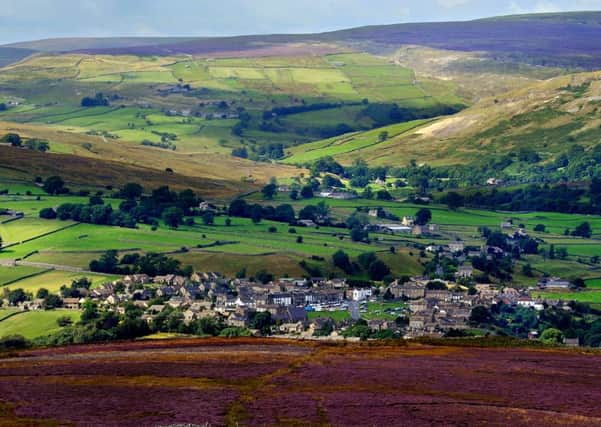Robert Flather: Yorkshire Dales needs new jobs ahead of second homes council tax hike


In common with many rural areas, families have drifted away to make their lives elsewhere. So why the exodus? Can it be that second-homers have snapped up all the property, denying homes for locals as the Yorkshire Dales National Park Authority rather simplistically asserts? Or is it more nuanced?
Depopulation began over a century ago with the closure of the lead mines, and a legacy of surplus housing left empty or falling into disrepair and dereliction. Mechanisation in agriculture quickly followed, prompting the further flight of families. Tourism arrested the decline, to a certain extent, with new jobs created through second homes and holiday lets.
Advertisement
Hide AdAdvertisement
Hide AdToday the Dales has full employment but a declining working-age population. A dip in the 18-to-24 age group corresponds with an increase in the over-60s as they move back for retirement in the country. And it’s not just the Dales where this is happening. This is a national issue; bright, well-educated youngsters move to the university towns and cities and chase career opportunities further afield.
This changing demographic is the big challenge for the Dales. To create careers, there’s a need for state-of-the-art facilities and infrastructure. The mobile phone signal is at best patchy and often non-existent. The high-speed broadband roll-out has helped and brought some permanent residents back, but the network is nowhere near universal.
More problematic are transport links. There’s a very restricted bus service with a timetable more suited for pensioners than employees. Coupled with a road system designed for previous centuries, it’s not surprising businesses shun the Dales and industrial units lie empty and unused.
No one wants to change the essential character of the area, but some radical thinking is needed to lure hi-tech businesses and with low environmental impact to stimulate the economy. Perhaps building on the growth of cycling, some hi-tech sports companies could be enticed here. The Dales Bike Centre near Reeth has certainly shown what is possible with a little imagination.
Advertisement
Hide AdAdvertisement
Hide AdBut it cries out for flexibility in the Yorkshire Dales National Park Authority’s planning policies and creative strategy. Just look across the A66 to Teesdale to see the difference with Swaledale. They’re similar dales, but Teesdale is a living and working dale, with vibrant rural schools and many young families. And – tellingly – it is outside the National Park boundary and the authority’s control.
The YDNPA also believes the Dales family revival could be driven by commuters who work outside the National Park. This might be possible around the fringes but the central area is just too far to travel on roads never designed for a speedy commute.
National Parks have a duty to protect the natural environment. Encouraging long-distance commuting is hardly that! The Dales needs employment embedded into communities and this is where all the efforts should be directed.
There’s a national problem with affordable homes and the Dales is no different. There’s plenty of affordable property available in the Dales but buyers aren’t queuing up. Many houses have been on the market for years and there’s evidence of price-cutting to entice buyers. Last weekend, 20 properties were available for sale within 10 miles of my cottage in Gunnerside for less than £220,000, when the national average house price is £226,000. One house in our village was recently bought by a family after standing empty for at least two years. If the demand was there, it would have been snapped up.
Advertisement
Hide AdAdvertisement
Hide AdWe bought our house in 2014, paying less than the vendors paid eight years previously. They’d bought it from a Dalesman who still lives in the village. Our seller had spent more than £50,000 on the property using local tradesmen. Just one example of many that directly contradicts the assumption that second homes are denying locals a place in the Dales. Richmondshire District Council’s leader says there is no evidence that a council tax hike of at least 500 per cent would reduce all house prices in the Dales. If this is the case, which I dispute, then what’s the logic? If properties are already unaffordable to local families, what is the point of bringing more to the market?
The YDNPA needs to concentrate on planning policies and infrastructure improvements to attract businesses offering exciting career opportunities for the young, and then the families will return. They’re attacking the symptoms, not the cause.
Remember James Herriot and the famous Swaledale water splash at the beginning of All Creatures Great And Small? We still drive through it today – but now in hybrid cars, not Austin 7s. Same dale, new reality.
Robert Flather is co-founder of the Dales Home Owners Action Group.